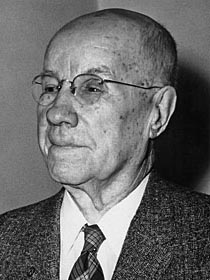- info@mayflowerhomes.com
- 800-936-6151
History

The history of the Mayflower Community began in 1948 when Royal J. Montgomery retired from his position as Superintendent of the Congregational-Christian Conference of Iowa. (Dr. Montgomery first came to the Iowa Conference staff in 1919 as Director of Religious Education and served in that capacity, with one brief interruption, for twenty years. Consequently he was known throughout the Iowa Congregational fellowship, and he knew generations of young people in the churches as well as their parents and grandparents.)
Although he and his wife were living comfortably in their home, both realized that eventually they would need to simplify their living arrangements. Dr. Montgomery was also aware that other Congregational ministers and their wives were not as fortunate as he and Margaret were. For the most part, these couples had spent their active years in the ministry, living in church-owned houses and their pensions were less than adequate.
Together, Dr. Montgomery and his wife spent some time after his retirement visiting established retirement homes and researching ways to create an environment that would be congenial and stimulating, not only for retired ministers and missionaries, but for other like-minded couples and individuals.
They came to the decision that they would offer to sell their own house and lot in order to start a fund for the proposed home, which would be located in Grinnell. Grinnell was a logical choice because, until Conference headquarters was moved to Des Moines in the early 1960s, it had been the center of Iowa Congregationalism with close ties to the college and Grinnell Church.
What was lacking was not the will but the means for making their dream a reality. It so happened that one evening in August 1949, they went to pay a visit of condolence to a staunch member of the Grinnell Church, Ferdinand J. Kiesel, whose wife had died a few days before. In the course of their conversation, Mr. Kiesel expressed concern for his own future in the large Victorian house, which had been the family home for Mr. Kiesel, his wife and their son Paul until his marriage. The home was too full of memories and possessions. Sensing his dilemma, the Montgomerys told him about their own plan to sell their house and found a retirement home.
Their proposal impressed Mr. Kiesel, and before long he called them and invited them to come back to talk about an idea he had. Why not give his house and two lots as a start for such a retirement home? Why not begin by converting the house itself into four apartments, one of which he would occupy? In this way he could continue to live in his own house and tend his garden, but at the same time have congenial neighbors and the stimulation of taking part in a new project rather than giving in to his grief and facing years of loneliness. The Conference Board of Directors was approached, at the time there was no legal retirement home organization. Both Conference Superintendent Judson E. Fiebiger and D.H. Thomas, business manager, favored the proposal; and at the next meeting of the board it was voted to accept the Kiesel offer and to proceed with remodeling the house.
In February 1950, Dr. Montgomery presented his plan for developing a retirement home to the Conference Board of Directors. The proposal was unanimously approved, the Articles of Incorporation were adopted by the State of Iowa in 1950, and the rest is history.
